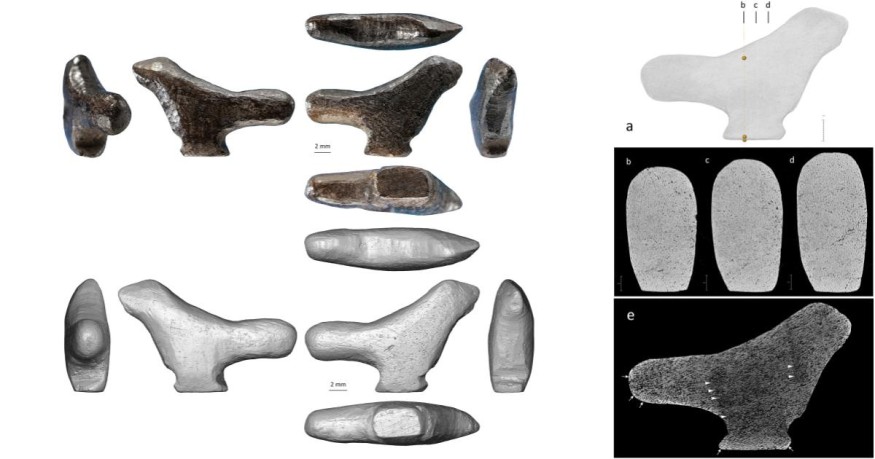
A 13,000-year-old tiny bird sculpture is the oldest work of art ever discovered in China on a site just a few hundred kilometers from modern Beijing, an international team of archeologists declared.
The ancient sculpture was found at Lingjin in Henan Province of China and is the oldest East Asian three-dimensional art discovered. The team led by Zhanyang Li from Shandong University, China, found that the bird figurine in 2005 from a layer of soil that had been removed to dig a well in 1958. The results of the study were published recently in the journal PLOS ONE.
Very Small, but Refined Sculpture
According to Francesco d' Errico, a director of research for France's National Centre for Scientific Research, when viewed from a microscope, one can see that it was made by an artist not only from the minute detail of carving but from the form chosen by the creator. "It's very small, but in fact, it's quite refined," he said.
The figurine, measuring less than 2 cm in length, is carved from a burnt bone and takes a form of a bird standing on a pedestal. The sculpture is different from the artistic styles of Europe and Siberia, making its artistic tradition distinct.
While the Linjing sculpture does not have wings, the study authors said that its outline: the tail, head, throat, belly, and breast and the eyes and bills matches that of a bird. The author says it belongs to the order Passeriformes or the perching birds.
The figurine features a beautiful balance: with the tail made much bigger so it and can stand upright when placed on a flat surface without falling forward on the head, explains d' Errico.
Scientists also suggest that based on the orientation of the bone structure of the bird sculpture, the bone is from a mammal's limb bone. A controlled heating process to blacken, shape the bone, and shrink it is necessary. Technical skill is also required to add color to the bone, d' Errico added.
Oldest East Asian Sculpture Art Discovered
The earliest animal sculpture recorded in East Asia is from 3,000 B.C.
The study authors report that the ancient bird sculpture is the only Palaeolithic three-dimensional object made from a burnt bone and is mounted on a pedestal. The only other recorded Palaeolithic bird carvings were pendants recorded from Siberia and are made of ivory and antler.
The oldest Chinese figurine was a jade songbird from the Neolithic period, dated about 5,000 BCE.
The earliest recorded carved figures were discovered in a much earlier period, around 40,000 years ago, in the Swabian Jura mountain range. The place is now known as Germany.
Rich Artistic Tradition in the Region
The detailed feature of the ancient sculpture made the research team conclude that there was probably a rich history of sculpting in the area.
The Lingjing artist had the appropriate techniques and skills to create the distinct anatomical features of a passerine, the authors said.
According to d'Errico, the bird figurine seemed to be too small for display. He thinks that it was made to be carried around in a bag or with other objects. d'Errico deems that a shaman might have used the said sculpture when predicting future and might be other little animals carved by the same person that was carried around.
© 2026 NatureWorldNews.com All rights reserved. Do not reproduce without permission.





